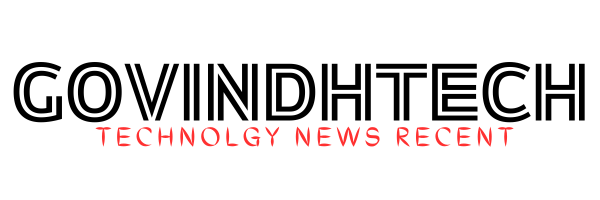By fusing textual and visual insights, Visual Language Models (VLMs) are revolutionizing data interpretation for challenging, real-world applications. VLMs generate insights in a wide range of domains, from watching customer behavior in busy stores to identifying minute changes in medical scans and forecasting traffic flow in real-time feeds. Through focused optimizations like mixed-precision training and parallel processing, AMD fortifies these models, allowing VLMs to efficiently interpret and combine textual and visual input.
In sectors where accuracy, efficiency, and reaction time are crucial, AMD enables VLMs to provide faster, more accurate outcomes by simplifying and expediting their handling of complex, multi-modal activities.
To Make It Faster and More Accurate
AMD’s optimizations improve the model’s speed and accuracy in processing visual information and related queries in visual question answering. AMD makes it possible for VLMs to produce accurate and dependable context-aware replies by speeding up each pathway. AMD enhances performance by specific methods intended to optimize model speed and flexibility inside the AMD environment, as opposed to changing the model architecture.
The method of simultaneously training a model on text and picture data, creating linkages between the two to improve accuracy and flexibility, is known as holistic pretraining. This method allows the model to comprehend words and visuals simultaneously, in contrast to sequential pretraining, which trains each modality independently. This method is enhanced by the AMD pretraining pipeline, which enables quicker and more effective model setup.
For customers who might lack the substantial resources required for intensive model pretraining, this is very helpful. AMD’s improvements reduce deployment time and costs by giving customers high-quality, ready-to-deploy models.
By adjusting a model to adhere to precise instructions, instruction tuning makes it possible for it to react precisely to a given cue. This feature is useful for focused applications like retail analytics, where instruction modification can enhance the model’s capacity to follow client journeys or pinpoint locations that are often frequented. AMD does instruction tweaking to improve the model’s performance on certain specific tasks.
Through this process of fine-tuning, customers are able to concentrate the model’s capabilities on the aspects that are most pertinent to their sector, resulting in more accurate and customized insights.
Without further fine-tuning, in-context learning enables a model to modify its replies according on the format of input cues. Applications that need organized answers, such as recognizing inventory items based on particular categories, benefit from this real-time flexibility. In inventory management, for example, a model that uses in-context learning may be asked to recognize certain objects in a picture using a list format (e.g., “Find fruits, vegetables, and beverages”).
The model offers a quick and useful answer to structured enquiries by modifying its response to fit the specified categories without the need for more training. These features are supported by AMD’s deployment pipeline, which allows models to function consistently across a variety of prompt forms.
Overcoming the limits of VLM
Since VLMs are usually made for single-image processing, they frequently have trouble with jobs that demand for the sequential interpretation of many pictures or the analysis of video. By improving VLM processing on its hardware, AMD overcomes these constraints. This makes it possible to handle consecutive inputs more smoothly, boost speed and efficiency, and enable VLMs to function well in applications that need contextual knowledge over time.
Multi-image Reasoning
AMD makes it possible for VLMs to collect and analyse time-series data more quickly and responsively, which helps them perform better on multi-image reasoning tasks like monitoring disease development in medical imaging. AMD helps VLMs analyse numerous pictures in sequence competently by optimising resource allocation and data management, which makes these models ideal for applications where comprehension of cumulative changes is crucial.
Video Content Understanding
Video analysis presents another difficulty for conventional VLMs as it requires the model to interpret an endless supply of visual input. Through faster processing that enables quick detection and summarization of significant events, AMD’s innovation guarantees that VLMs can handle video material more effectively. In domains like security, where it takes a lot of effort to identify noteworthy moments from hours of video footage, this method is beneficial. AMD’s enhancements allow VLMs to provide fast, contextually correct summaries in applications like meeting recaps and security footage evaluation, saving time and money.
A Full-Stack Approach Makes the Difference
From portable devices to high-demand data centers, AMD Instinct GPUs offer a solid platform for VLMs that can handle both routine and demanding AI operations. By optimizing compatibility with the majority of machine learning frameworks, such as PyTorch, TensorFlow, and Hugging Face, the open-source AMD ROCm software stack enhances AMD GPUs and allows users to execute models like LLaMA and Stable Diffusion with ease on AMD hardware.
ROCm uses cutting-edge methods including mixed-precision training to expedite processing and reduce training time from months to days, and quantisation to minimise model size without compromising accuracy. AMD GPUs are ideal for a variety of performance requirements because of ROCm’s adaptability, which enables it to expand from edge devices to massive data centres. With its open-source, community-driven methodology, resources such as ROCm promote ongoing innovation and speed up deployment and customisation, resulting in an ecosystem that changes in tandem with user demands and industry advancements.
Through advancements in both hardware and software, AMD additionally maximizes inference speed. AMD balances speed and accuracy by accelerating computations with mixed-precision training, which modifies numerical precision according to task needs. Furthermore, the ROCm platform enables AMD GPU parallel processing, which makes it possible to handle big datasets and intricate queries effectively. These enhancements enable VLMs to adapt to less urgent activities, such offline picture production, while still performing effectively in time-sensitive applications, like autonomous driving.


